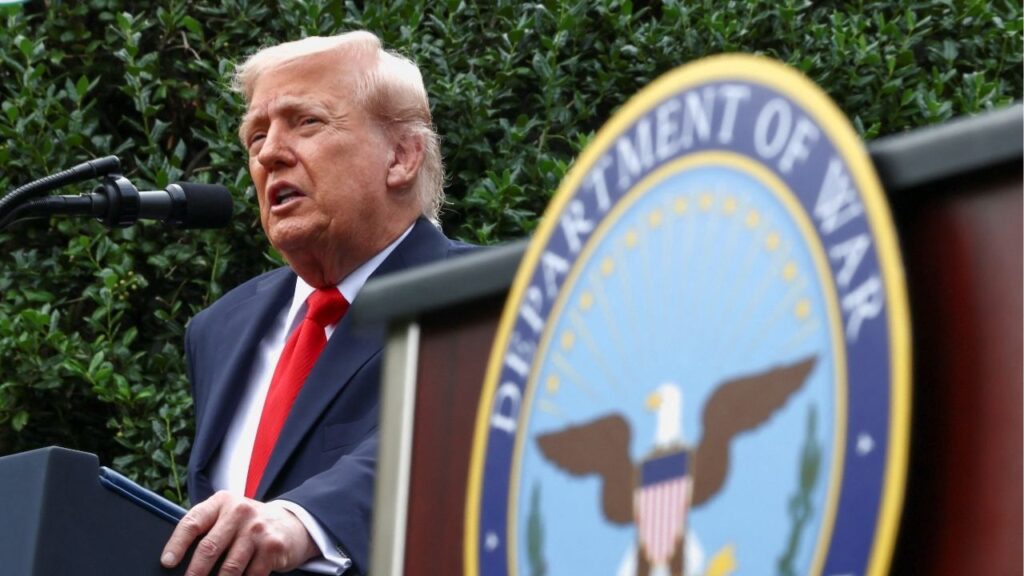Share
The leader of the violent Islamic State group was killed Thursday, blowing himself up along with members of his family during an overnight raid carried out by U.S. special operations forces in northwestern Syria, President Joe Biden said.
The militant was largely a mystery, with almost no known photos, never appearing in public or in the group’s videos.
He met his end in the same rebel-held Idlib province where his predecessor, Abu Bakr al-Baghdadi, was hunted down by the Americans more than two years ago, some distance from the main theaters in eastern Syria and Iraq where the group once held vast swaths of territory in a self-declared “caliphate.”
Militant Exploded a Bomb as U.S. Forces Approached
Biden said al-Qurayshi exploded a bomb that killed himself and members of his family, including women and children, as U.S. forces approached.
A veteran opposition fighter since the U.S.-led invasion of Iraq in 2003, he took the name Abu Ibrahim al-Hashimi al-Qurayshi when he took over command of IS after al-Baghdadi was killed in the October 2019 raid. It was up to him to lead the group’s remnants as they regrouped following the downfall of their caliphate and shifted underground to wage an insurgency in Iraq and Syria.
His death comes as IS militants, after years of low-level hit-and-run ambushes, had begun to carry out bolder, higher profile attacks. Last month, its fighters attacked a prison in northeast Syria to free their jailed comrades, leading to a 10 day battle with Kurdish-led forces that left some 500 dead.
It is unclear whether his killing now will break the group’s momentum.
His real name was Amir Mohammed Saeed Abdul-Rahman al-Mawla, an Iraqi in his mid-40s, born in 1976 and believed to be an ethnic Turkman from the northern Iraqi town of Tel Afar. He held a degree in Islamic law from the University of Mosul.
His adoption of the nickname al-Qurayshi when he became IS’s “caliph,” suggested that he, like his predecessor, claimed links to the tribe of Islam’s Prophet Muhammad.
Like his predecessor — who was killed in the village of Barisha only about 15 miles away — al-Qurayshi spent his last days in Idlib province, an area held by insurgent groups hostile to IS.
Others in Leader’s Home Killed in Blast
He was staying in a two-story house in the town of Atmeh, near the border with Turkey. The early Thursday raid on the house killed him and 12 other people, including four women and six children, according to first responders.
After the raid, few people in Atmeh knew who the family renting the house was. Journalists at the site quoted neighbors as saying that the man who lived on the second floor with his family had earlier identified himself as Abu Ahmad, a Syrian who was displaced by war from Aleppo province.
Idlib province, the last major rebel stronghold in Syria, is home to 3 million people, many of them displaced by the civil war, making it easy for strangers to blend in. The house, surrounded by olive trees, appears to have been chosen by al-Qurayshi to be as far away as possible from the eyes of onlookers.
Around midnight Wednesday helicopters landed in the area carrying U.S. special forces and closed on the house.
“If you don’t leave, we have orders. We will fire missiles toward the house. There are drones overhead,” a man speaking with Iraqi dialect could be heard saying through a loudspeaker. An audio was circulated on social media.
An explosion shook the area later and knocked out much of the top floor.
Al-Arabiya TV said three of the four women who were killed in the explosion might have been the wives of the extremist leader. It is common for members of extremists group to be married to up to four women, which is allowed under Muslim tradition.
Since taking command of IS, al-Qurayshi has topped the wanted list of the U.S. and other regional governments fighting the extremists.
U.S. Offered $10 Million Reward
On March 18, 2020, the State Department listed al-Qurayshi as a Specially Designated Global Terrorist. A few months later, the U.S. doubled its reward to $10 million for information leading to his identification or location. Al-Qurayshi was also known by the two other noms de guerre, Abu Omar al-Turkmani and Abdullah Qaradash.
The U.S. Treasury Department said al-Qurayshi helped drive and justify the abduction, slaughter and trafficking of members of Iraq’s Yazidi religious minority and that he oversees the group’s global operations. Thousands of Yazidi men were killed from the group, and thousands of women taken as slaves in what rights groups say amounts to a crime of genocide.
Al-Qurayshi began his militant work shortly after former Iraqi dictator Saddam Hussein was removed from power. A year after the 2003 U.S.-led invasion of Iraq, al-Qurayshi joined al-Qaida in Iraq, run by Jordanian militant Abu Musab al-Zarqawi.
Al-Qurayshi was arrested by U.S. troops in Mosul in 2004, where he was held for two years. During his imprisonment, he became al-Baghdadi’s top security henchman.
Following al-Zarqawi’s death in a U.S. strike in 2006, al-Qurayshi became a senior official with the al-Qaida affiliate’s successor group, the Islamic State in Iraq, which under al-Baghdadi transformed into the Islamic State group.
When IS overran much of northern and eastern Syria and northern Iraq and declared its caliphate in 2014, al-Qurayshi became a senior official in the leadership. As the group’s caliphate crumbled in the years-long war with a U.S.-led coalition in both Iraq and Syria, he went into hiding.
RELATED TOPICS:
Categories

Trump Expected to Sign $1 Trillion Annual Defense Bill


















